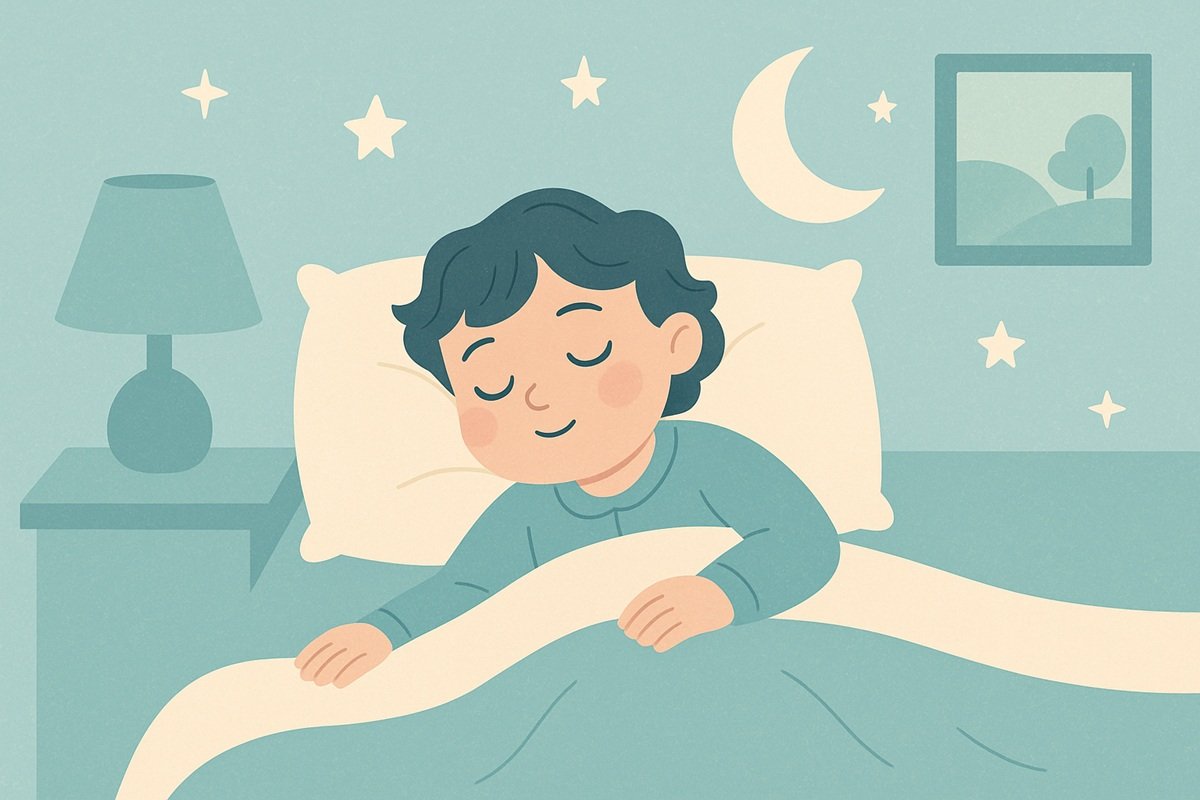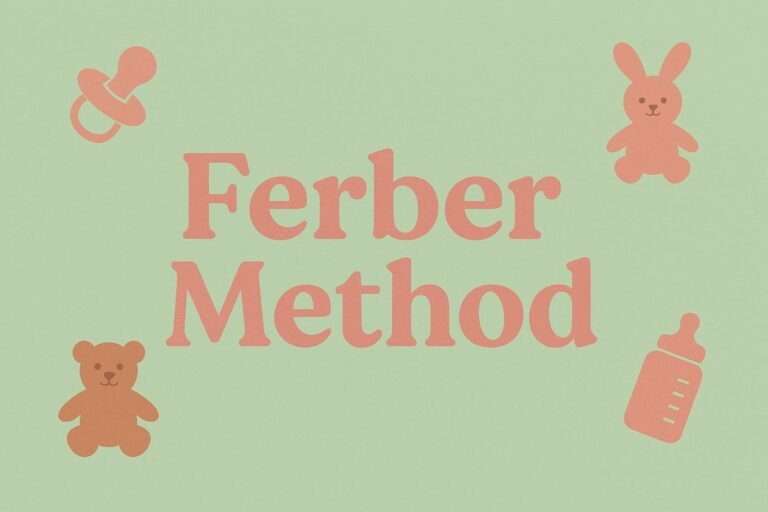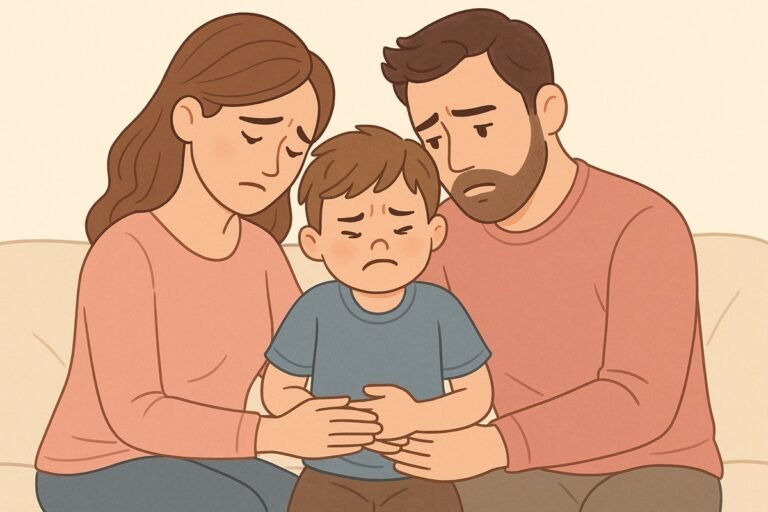Disclaimer: This article presents the professional opinion of a children’s physician and is meant for educational purposes only. It does not constitute medical consultation, diagnosis, or treatment. Always consult a licensed pediatrician or healthcare professional before starting any medical interventions, treatments, or behavioral routines related to your child’s sleep. Never ignore or delay medical advice based on content in this article.
Sleep in children is a vital biological process essential for brain development, emotional regulation, physical growth, and immune function. As parents, one of the most frequent concerns we face is ensuring our children sleep well and enough.
From the unpredictable sleep patterns of a neonate to the bedtime resistance of a toddler, navigating your child’s sleep journey can be challenging.
This article provides a medically informed, parent-friendly guide to understanding sleep and how to effectively support your child’s healthy sleep habits.
Table of Contents
Understanding Sleep: A Medical Overview
From a medical point of view, sleep is not a passive state. It is an active, highly organized process that is critical for both the body and the brain.
In children, sleep influences memory consolidation, mood regulation, hormone secretion (including growth hormone), and overall development.
There are two primary types of sleep:
- Non-Rapid Eye Movement (NREM) Sleep: Includes deep sleep stages, crucial for physical restoration.
- Rapid Eye Movement (REM) Sleep: Involves lighter sleep and dreaming, important for brain development and learning.
Children cycle through these stages multiple times each night, and the structure of these sleep cycles changes with age.
Sleep Cycles in Children
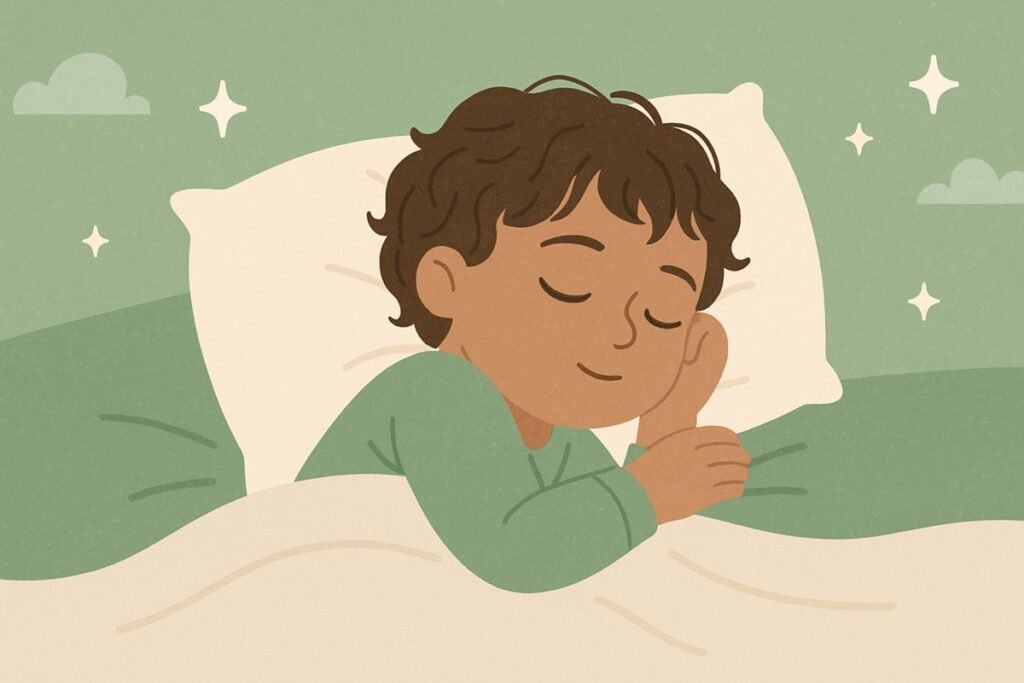
Each sleep cycle in a child typically lasts between 50-60 minutes in infancy and gradually expands to 90 minutes by adolescence.
Sleep goes through the following stages:
- Stage 1 (Light Sleep): Easy to awaken; body relaxes.
- Stage 2: Heart rate slows, temperature drops.
- Stage 3 (Deep Sleep): Critical for healing and growth.
- Rapid Eye Movement (REM Sleep): Brain activity increases; essential for cognitive functions.
Disruptions during any of these stages can lead to poor sleep quality, behavioral issues, or learning difficulties.
Sleep by Age Group
There are major differences in the sleeping habits and needs of children as they progress from infants to adolescents.
Following are the typical patterns for children in different age groups (with sleep duration recommendations from the American Academy of Sleep Medicine – AASM) and what parents can do to support healthy sleeping routines as part of their parenting style:
1. Sleep in Neonates (0-28 Days)
- Typical Sleep Pattern: 16-18 hours/day, fragmented into short periods.
- Sleep Cycles: Short, lasting 40-50 minutes.
- Features: Immature circadian rhythm; frequent waking due to hunger or diaper changes.
Tips:
- Follow baby’s cues for sleep and feeding.
- Keep night interactions calm and quiet.
2. Sleep in Infants (1-12 Months)
- Sleep Duration: 12-16 hours/day, including naps.
- Pattern: Longer night sleep by 4-6 months; fewer nighttime feedings.
- Development: Circadian rhythm begins to mature.
Tips:
- Establish a consistent bedtime routine.
- Use dim lighting and quiet environments.
- Encourage self-soothing by placing the baby in the crib while drowsy but awake.
3. Sleep in Toddlers (1-3 Years)
- Sleep Duration: 11-14 hours/day.
- Challenges: Bedtime resistance, night waking, and fear of darkness.
Tips:
- Set firm but gentle sleep boundaries.
- Maintain the same bedtime and wake time daily.
- Offer a comfort object like a soft toy.
4. Sleep in Children (4-12 Years)
- Sleep Duration: 9-12 hours/night.
- Challenges: Increased stimulation from screens, school stress, or social anxieties.
Tips:
- Limit screen time to end at least one hour before bed.
- Provide a calm, distraction-free sleep environment.
- Encourage physical activity during the day.
Abnormal Patterns of Sleep in Babies and Children
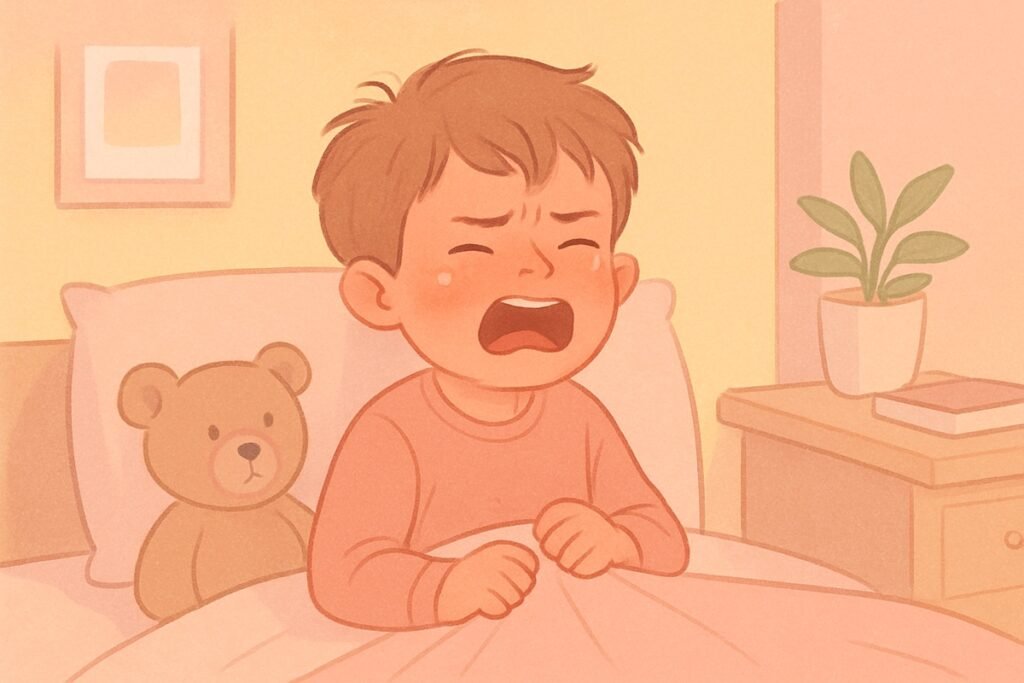
Some children may experience unusual sleep patterns or disrupted sleep cycles that affect their health and behavior.
Examples of Abnormal Sleep Patterns
Examples of some typical sleep abnormalities that many children tend to exhibit include:
- Short Total Sleep Duration: Often due to environmental factors or poor sleep habits, babies and children may consistently receive less sleep than the age-appropriate level.
- Fragmented Sleep: Frequent awakenings may be due to medical issues like reflux, teething, or sleep apnea.
- Irregular Sleep Timing: Inconsistent bedtime routines or exposure to screens can confuse a child’s internal clock, leading to inconsistent falling asleep times and waking up times.
Medical Sleep-Related Conditions to Consider
While many children experience some sleep disruptions, at least occasionally, sometimes these abnormalities are serious enough to deem professional help.
Some specific conditions that require immediate attention are:
- Obstructive Sleep Apnea: This is a serious medical condition that is expressed as snoring, gasping, and restless sleep.
- Night Terrors: These are characterized by sudden arousal from deep sleep with screaming or thrashing.
- Sleepwalking: While sleepwalking is more common in older children and is often benign, in some cases it might start early on and have grave consequences.
Always consult a pediatrician if these patterns persist or interfere with daily functioning.
Sleep Problems and Conditions
Common pediatric sleep disorders include:
- Insomnia: Insomnia is defined as difficulty falling or staying asleep.
- Parasomnias: These include night terrors, sleepwalking, and talking during sleep.
- Circadian Rhythm Disorders: This is characterized by a delayed sleep phase, especially in older children.
- Behavioral Sleep Problems: This refers to refusing to go to bed or needing a parent present to sleep.
Red Flags No Never Ignore:
- Persistent snoring or breathing pauses.
- Daytime fatigue despite adequate time in bed.
- Mood swings or hyperactivity (sometimes misdiagnosed as ADHD).
- Sleep regression lasting more than a few weeks.
If your child exhibits any of these conditions or problems, you need to consult a medical specialist.
Regulating Your Child’s Sleep
Good sleep habits – often referred to as sleep hygiene – can significantly improve your child’s quality of sleep.
Here are specific steps that you can follow to help your child regulate their sleeping:
Steps for Sleep Regulation:
- Consistent Bedtime Routine: Bath, story, cuddles – in the same order each night.
- Regular Sleep and Wake Times: Both on weekdays and on weekends, even on vacations.
- Optimal Sleep Environment: Cool, dark, and quiet.
- Limit Caffeine and Sugar Intake: Especially in the evening.
- Avoid Overstimulation Before Bed: Reduced active play and screen time a couple of hours before bedtime.
- Encourage Self-Soothing: Avoid rocking or feeding to sleep after infancy; suggest a favorite stuffed animal or toy instead.
Tools That Help:
- White noise machines.
- Sleep sacks or wearable blankets.
- Reward charts for older children.
When to Seek Professional Help:
- If sleep issues persist despite good sleep hygiene.
- If you suspect a medical or neurological cause of irregular sleep patterns.
- If your child’s sleep disturbances affect family functioning or school performance.
Final Thoughts
Helping your child develop healthy sleep habits is a journey that evolves with age. Understanding the science of sleeping – from the fragmented cycles of a neonate to the bedtime routines of a child – empowers you to parent with confidence and compassion.
Stay patient, be consistent, and always remember that occasional sleep disturbances are normal. But when in doubt, consult your pediatrician. Good sleep is not just about rest – it’s the foundation for growth, learning, and emotional well-being.
What have your experiences been with your child? What are their sleeping habits? What has worked and what has not for establishing a healthy sleep routine? Share your thoughts and experiences in the comments.

